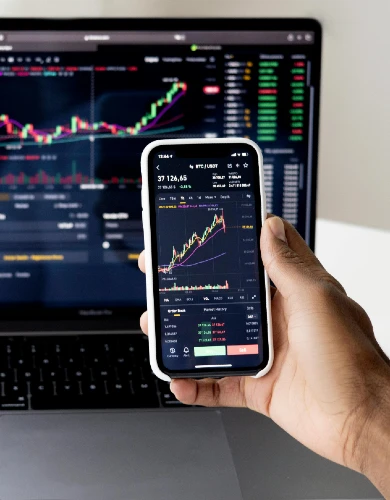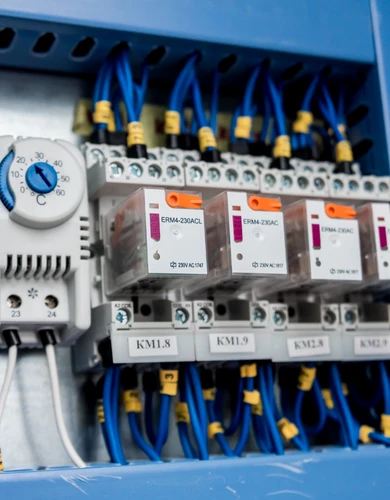Half-Hourly Meters Explained
Half-hourly meters measure the power consumption of commercial properties that use large amounts of electricity.
Half-hourly meters work like a typical electricity meter, except they automatically record readings every 30 minutes and transmit them to your business energy supplier.
In this article, we explain the important aspects of half-hourly electricity meters, including:
- Benefits of half-hourly meters
- The issues with half-hourly metering
- What businesses have half-hourly meters?
- Half-hourly meter prices
- Who is responsible for my half-hourly meter?
Benefits of half-hourly meters
Half-hourly meters offer three key benefits for business owners, which we summarise below.
Accurate billing
By using a half-hourly meter, your business energy supplier will receive automatic meter readings, allowing them to track your electricity consumption and bill you accurately each month.
Accurate monthly electricity bills make it easier to monitor your electricity costs and avoid unpleasant surprises when you submit a manual meter reading.
Off-peak tariffs
Half-hourly meters give your business access to a broader selection of business energy contracts.
Suppliers such as Octopus Business Energy offer smart multi-rate tariffs, allowing businesses to take advantage of lower off-peak electricity rates.
For more information, read our guide on multi-rate business energy tariffs.
Energy consumption data insights
Half-hourly meters automatically provide live data on your business energy consumption.
Using half-hourly meter data with business energy monitoring software allows you to report, forecast, and optimise energy consumption.
The issues with half-hourly metering
The main consideration with half-hourly meters is that daily business electricity standing charges are higher than other meter types.
However, the variety of half-hourly meter costs can offer flexibility, though it may require a bit more attention when comparing business electricity rates and switching business energy suppliers to ensure you’re getting the best deal.
Who needs a half-hourly meter?
Ofgem regulations require that businesses with a maximum power demand exceeding 100kW in any half-hour period must have a half-hourly meter.
💡100kW is equivalent to the power demand of 25–30 homes at peak electricity usage (when lights, fridges, TVs, kettles, etc. are all on).
You can tell if you already have a half-hourly meter based on the first two digits of your MPAN:
- Profile class 00: Business electricity connection exceeding 100kW in demand.
- Profile class 05-08: Connection with less capacity but has voluntarily opted for a half-hourly meter.
Should I upgrade to a half-hourly meter?
We do not recommend upgrading to a half-hourly meter if you are not obliged to have one.
Modern smart business energy meters used by small businesses can also provide automatic meter readings every 30 minutes but have lower standing charges.
Should I remove my half-hourly meter?
If you’ve recently moved into a commercial property with a half-hourly meter but only have low power demand, it may be beneficial to remove the meter to avoid the additional costs.
Replacing a half-hourly meter will also involve removing its high-capacity wiring, which can be expensive. Your local distribution network operator will need to carry this out.
Visit our business electricity meter installation page for more information.
Half-hourly meter prices
Businesses with half-hourly meters pay additional standing charges compared to other types of electricity meters.
In this section, we explain the impact of having a half-hourly meter on each element of business electricity rates.
Demand related charges
Two additional charges may apply to businesses with half-hourly meters related to their peak power demand. These are:
- Capacity charges: A monthly fixed charge based on the Maximum Import Capacity of the electricity connection.
- Excess capacity: An additional charge if the Maximum Import Capacity is exceeded.
For more information on these charges, refer to our guide on maximum demand charges.
Half-hourly meter standing charges
The daily standing charges for half-hourly meters are significantly more expensive than those for equivalent small business connections.
This is because business electricity connections with half-hourly meters typically have a much higher power capacity, meaning more fixed costs are associated with maintaining the connection to the local grid.
Meter operator charges
Businesses with half-hourly meters pay a meter operator charge to the company that installs and maintains their half-hourly meter. Annual MOP charges typically range from £300 to £600.
Meter operator charges are billed through your monthly business electricity bill or directly by the meter operator.
Find out more in our guide to Meter Operators.
Half-hourly unit rates
Due to the higher volume of energy consumption, unit rates per kWh of electricity consumption on a half-hourly meter are slightly cheaper than those for small business energy customers.
Reactive power charges
Half-hourly business electricity meters also measure the reactive power demand of energy-intensive properties.
Reactive power is a form of non-working power required for certain types of electrical equipment.
When reactive power exceeds 5% of overall power consumption, local grid operators levy a reactive power charge.
For more information, read our guide to reactive power charges.
Who is responsible for my half-hourly meter?
There is a lot of confusion around half-hourly meters from the various parties involved in their installation, maintenance, and operation.
Here, we’ll summarise the different parties involved with half-hourly business electricity meters:
- Business electricity suppliers: Receive data from your half-hourly meter and use this information to generate accurate business electricity bills.
- Meter operator: Responsible for installing, maintaining, and operating your half-hourly meter.
- Data collector: Responsible for the transmission of half-hourly meter readings (typically using a business broadband or SIM card).
- Data aggregator: Processes data from half-hourly meters and provides this to the supplier.
The biggest energy suppliers (EDF, British Gas, SSE, etc.) also act as meter operators, data collectors, and aggregators.

